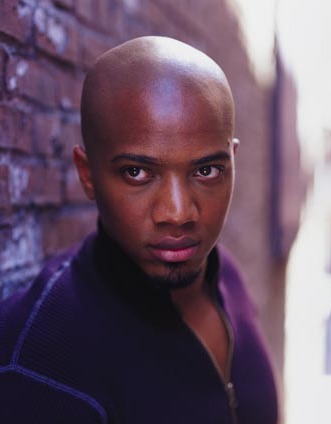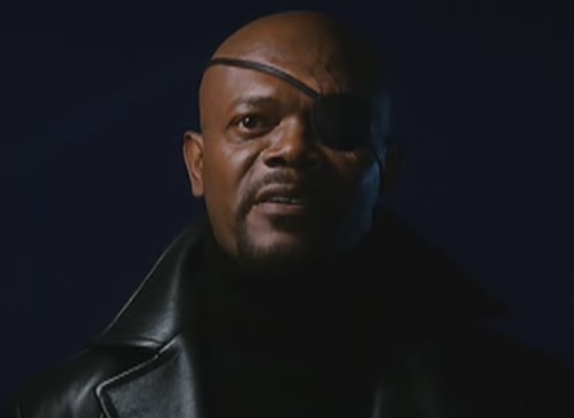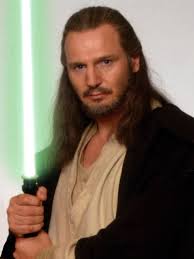We at Tosche Station haven’t been shy with asking for more racial and gender diversity in entertainment. One of the arguments we often hear is that the gender and race of characters shouldn’t matter. The most important thing should be the story. The rest should be inconsequential. The best actor for the part should be cast in that role.
That would be all fine and dandy, if most entertainment already portrayed a diverse cast of characters. But it doesn’t. Western mainstream entertainment doesn’t portray many LGBT characters, either, or people with different body types. Half the people in the world are female, so why shouldn’t half the characters in a movie be female? The United States is an incredibly diverse nation, so why shouldn’t television shows set in that country feature a diverse cast of characters?
Remember the complaints (and even outrage) when people speculated that characters like Spider-Man or The Human Torch would be played by black actors in future films? Remember people asserting that Nick Fury or Heimdall should never be played by black actors because the characters were white in the comics? We’ve seen those characters in several Marvel movies now–does anybody still complain about their race? If so, they’re idiots, because those characters are awesome bad-asses. It could be argued that there wasn’t any reason story-wise to make those characters black, and that would be true. But there weren’t any reasons not to make those characters black. The movies were still great, and they offered a more diverse cast. A win-win situation if you ask me.
Making a character black, or gay, or a woman, isn’t going to make the story inherently better, nor will it cause the rest of the story to suck. It doesn’t mean that the creators don’t care about the quality of the entertainment and are just trying to appease the “PC crowd.” (Does anybody still use the term PC anymore?) I feel exactly the opposite whenever I hear rumors of female characters in Rebels, or racially diverse actors up for roles in Episode VII. In my experience, creators who are more sensitive to diversity issues are more likely to create well-rounded, relatable pieces of entertainment. Look at Gene Roddenberry, who wanted the cast of Star Trek to be diverse because that’s what the future would turn out to be. In that case, diversity made sense according to the story, but he still had to fight his battles to get his way.
Diversity for diversity’s sake makes sense according to the world we live in right now. Just look around you, either at school or work or in your neighborhoods. So why do some people still not see it as one solution to the problem?
Let’s look at an example from the 1990s. Disney’s The Lion King was the highest grossing animated film of all time. Disney decided to adapt it into a Broadway musical. Julie Taymor was the director. She disliked the fact that the movie only had two female characters with speaking roles, and wanted to give them greater representation in the play. One way to do that was to increase Nala’s role, and make her more important to the overall story.
The second method? Genderswap Rafiki, the wise old baboon who encourages Simba to go home and take his place as king.
I can hear the groans now. “But why does Rafiki have to be a girl? Rafiki was a male in the movie! Changing his gender is stupid and doesn’t add anything to the story! It’s just diversity for diversity’s sake!”
To which I respond–so what?
I love gender-swapped Rafiki. It is one of the many reasons I love the musical more than the film (and the film is still my favorite Disney movie of all time). The story is deeper, the music is fuller, the characters have more motivation. And something about the female Rafiki resonates with me. The character seems much more sympathetic in the musical version, but still just as playful, and commands respect from both the audience and the other cast members. So much so that I always have a negative reaction to the animated Rafiki.
Changing Rafiki’s gender didn’t change the overall plot of The Lion King. But somehow it made the story even better. And that’s why diversity for diversity’s sake isn’t necessarily a bad thing.
This is why creators should take a look at their creations and ask, “can any of these characters be female? Gay? Black?” etc. etc. Whenever I make this argument, I always come back to The Phantom Menace and the idea of Qui-Gon Jinn being a woman. That little change might not have greatly altered the plot of the Star Wars prequels, but just imagine Anakin developing an attachment to another female character after leaving his mother, and then having that character die, leaving him in Obi-Wan’s care. That would have created a whole ‘nother set of issues for Anakin’s character, and given the prequels a second female Jedi with a speaking role (besides Jocasta Nu), and a second major female character next to Padme.
And, who knows. Maybe, like The Lion King, the movie would have been better. We’ll never know.
But we do have three more Star Wars films to look forward to, as well as standalone films and television shows. We can only hope that J.J. Abrams and Kathleen Kennedy and everyone involved with the films will strive to increase the diversity of the characters.

For all its successes, Buffy the Vampire Slayer failed on the racial diversity front. Later Charles Gunn became a major cast member the spinoff series, Angel.
To those who say that creators should focus on building well-rounded characters and storytelling, not necessarily going out of their way for more diversity, I say this: Good storytelling should and does include diverse characters. A diverse cast has never made a bad story a great one, but it has made good stories even better. Also, a lack of diversity has marred otherwise great stories. Many people have criticized early Whedonverse projects for their lack of racial diversity, something Joss Whedon himself has commented on and, thankfully, improved on. (Although it’s still odd that none of the main Firefly cast is Asian, considering the Asian influence on that culture.)
So, with all that said–why not default on the side of diversity?





Agreed. This is something that all creators should consider. I’m currently writing my own story with two female characters: one Hispanic/Latina and the other black. There is also a male character, who I initially had as white. This morning on the train I thought, “I should make him of Chinese descent. OH SNAP!” It really doesn’t change the story and I could change him back, but I like having diversity for diversity’s sake. I live in a very diverse neighborhood. I work in a very diverse environment. My own family is just as diverse: Puerto Ricans, Dominicans, Mexicans, and Ecuadorians, blacks. Diversity should be the default because we live in such a diverse world. The idea that certain people can’t identify with others because of their race, nationality or ethnicity is a poor excuse, in my opinion. The fact of the matter is that we’re all human. I may not identify with a particular heritage or background, but I will identify with their emotions, their struggles, and their triumphs. I can find parallels or learn something new because of that character’s diverse nature.
This was a great thinking piece. Thank you for pointing this out and sharing it with others because diversity for diversity’s sake is really not a bad thing. It just helps to reflect the society that we live in.
Pingback: Deconstructing Four Arguments Against Diversity in Media (That my Teenage Self was Guilty of Using) | Tosche StationTosche Station
I couldn’t agree more. Putting aside those who are just blatantly bigoted, it strikes me that the “don’t do diversity for diversity’s sake” folks are at best naive of how important diverse representation in media is and how far behind Hollywood is in that area. The only people I hear say those things are those who have never been the minority group in anything and/or are simply still immature in their worldview. Hate to put it so simply but that’s actually the most credit I can give them.
My #1 gripe regarding lack of diversity in the GFFA is the virtual absence of Asian characters in a universe that is so heavily influence by Asian culture (similar to Firefly). We all know that the Jedi are Asian Monks/Samurai Warriors and yet not a single major Jedi in the films/tv shows is Asian? That’s craziness. it’s no wonder Baltar Swan developed a cult internet following.
I give the OT a pass just because of the place in time it was created, but the PT should have done better, and I sincerely hope that the ST and Rebels do a LOT better.
I agree with most, but I have to disagree on Thor. That just felt like ‘here, your token black dude and token asian dude’ with the black Heimdal and the asian guy (can’t remember the character’s name). I mean really? It’s supposed to be Nordic mythology, where the gods look like the people of the land (Scandinavia), and they didn’t. Heimdal was great, but he wasn’t Asgardian anymore. (Same with the black haired Sif; how do you go from blonde to black?) The actors did great work, but the characters wasn’t Asgardian.
They could have made _any_ of the humans black or asian, but they stuck with white, white, white, and white for them. So I found that the clear tokenism in Thor really do detract from the story. They had the opportunity to create diversity and make it believable, but they didn’t.
I really think they chose the worst way possible to try and introduce diversity in Thor by disregarding the source material, when the mythology is such an important part of the story. :/
Let’s have diversity, but let’s also make sure they do good work with the characters and doesn’t just turn them into that token *insert minority here*. I want interesting, diverse characters, not token, diverse characters. Do something good with the characters when you create a diverse cast. Make them believable. That should be just as important as making sure you do have a diverse cast.
(And Avenger’s Nick Fury really is an interesting character).
I hope you don’t throw me to the vultures now.
(Disclaimer: I’m biased when it comes to Nordic mythology with it being part of my upbringing and culture).
As the resident comic nerd, I’m gonna take this one. First, the film was based (obviously) off of the Marvel comics. The comics definitely took liberties from the mythology and it actually is canon in the comics that Sif has brown hair. It’s also canon that Hogun of the Warrior’s Three has Asian features.
As for Heimdall, I disagree that it was tokenism and I really don’t feel like that was Marvel’s intention in the least. Actually, if I remember correctly, that casting choice had much more to do with the director. I remember reading an interview back in 2011 where Idris Elba said that Kenneth Branagh called him up and asked him to come play this small part because he thought he’d be perfect. There was another interview where Branagh said something along the lines of Heimdall just needing this presence to him where he can say ‘You shall not pass’ and people absolutely believe it.
In short, I saw Idris Elba’s addition to the cast as expanding upon the changes that the comic universe had already made and also as the director casting someone in a roll that requires that sort of demanding presence.
Also, as an add on to Nanci’s mention of Fury just because I can mention this: The fun thing there is that when Marvel created the Ultimate universe, they based Fury’s look after Samuel L. Jackson and there was even a throw away line at one point where some of the characters were talking about who would play them in a movie and Fury says SLJ. Mind you, this was years before the MCU. Around rolls Iron Man with its Fury cameo at the end aaaand it’s SLJ. So in a way, that also came from the comics.
I also just want to point out that Nordic mythology has had way crazier things, like gender-bent Loki, lots-o-legged horses, etc, so the argument that a GOD couldn’t reasonably have a different skin color is a little juvenile. Just as well, there were Nordic people of color, since trade was still a thing going on and even in the darkest and quietest times, people in Scandinavia and surrounding areas had had contact with people from outside of their homeland and knew that POC of color existed and possibly existed as Scandinavians as well. Couple that with the fact that light skin had to evolve more than likely after early humans traveled to Europe, meaning that there would of course be some kind of skin variety within Northern Europe because genetic evolution doesn’t work like a light-switch that can’t be turned back, and basically your indirect argument that parts of Europe were ever an all-white land is incorrect. There is archaeological proof that Vikings were influenced by Eastern Asian culture, with things like extra gods, Buddha statues, silk, etc discovered from their time.
I just really want people to think about the faulty logic they are using when they try to justify that something/someone shouldn’t be non-White because they are something of European origin, when Europeans themselves weren’t always white, and white people weren’t only exclusively European. If you keep in mind just how the history of humanity works, it makes very little sense that there was ever a time in which Europe was an all-white fantasy land.
Not sure if you care to look at tumblr at all, but one blog, http://medievalpoc.tumblr.com/, has compiled an excellent almost-database of art and artifacts that disprove the notion that there was ever a time where POC didn’t exist in Europe. Just in case you want to look into it more.
The example I often cite is Arwen’s larger role in the movie adaptations of the Lord of the Rings.
Pingback: Rebels cast reveals spark discussion of diversity, representation
Pingback: Rebels cast reveals spark discussion of diversity, representation | Club Jade
Pingback: Lupita Nyong’o and Gwendoline Christie in Star Wars: Episode VII | The Wookiee Gunner